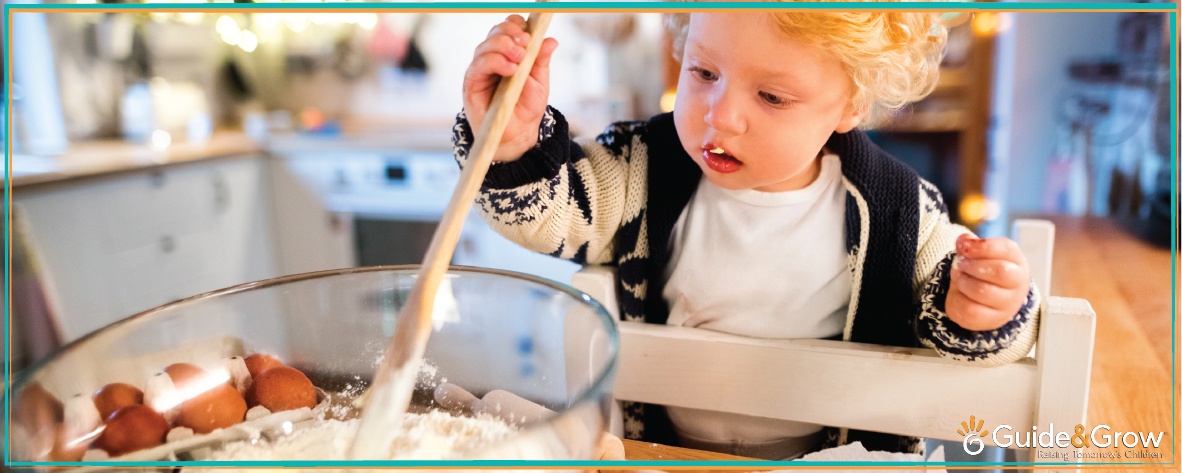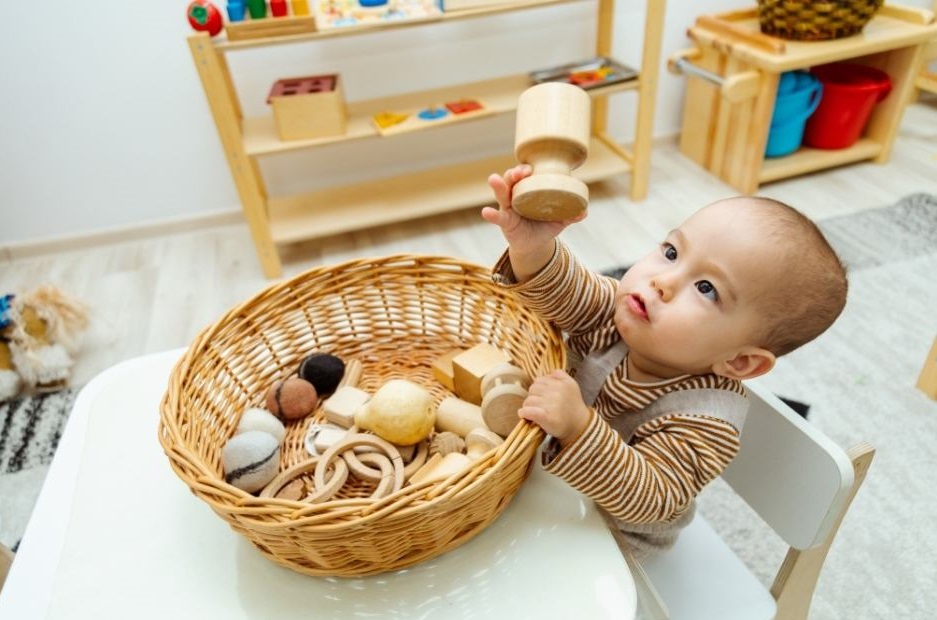“To assist a child, we must provide him with an environment which will enable him to develop freely.” – Dr. Maria Montessori
Childproofing homes has become an ever-growing trend with an insatiable sales market directed towards parents. You can buy locks for your cabinets, gates for your hallways, door handle covers to prevent small hands from turning knobs – the list is endless. Although the intent of these childproofing features is to keep children safe, they remove the opportunity for
teachable moments that allow the child to develop independence and respect for boundaries. As Dr. Maria Montessori advised, in order to truly assist the child, we as adults need to create an environment that will allow he/she to explore and develop freely; in other words, a child-friendly, rather than a child-proofed home.
How can you keep your child safe, while respecting their autonomy and fostering their independence?
Shifting the focus to a child-friendly home (rather than childproofed) provides the child with the opportunity to understand and respect boundaries while honouring their autonomy and helping them develop self-control and care for their environment – all core Montessori philosophies.
When a child is given the ability to accomplish tasks they believe to be intended for adults, they feel a huge sense of pride that immeasurably boosts their self-esteem. These tasks can be as simple as using a small glass cup, rather than a plastic child’s cup. In using a cup of a more fragile material, a child learns to take special precautions that not only increase their level of concentration, but help to foster their coordination and fine motor development.

What does safety in the home look like?
This certainly doesn’t mean being irresponsible with your child’s safety. Safety comes first before Montessori or any other philosophy or practice. As parents, we need to remove dangerous materials or chemicals from the reach of children and be mindful of small objects with toddlers who put things in their mouths to safeguard against choking. Generally speaking, however, children are a lot more capable than we provide them the opportunity to be when we childproof their environment.
Discover practical, easy-to-implement strategies to gently navigate your child’s emotional outbursts, while maintaining your own sense of calm.
So what should you do about that hot stove or that extension cord in the living room?
Use these items to facilitate teachable moments. This does not mean to draw unnecessary attention to them, but instead, when your child expresses interest, explain to them in simple language that these things have the potential to hurt them and you want to keep them safe. If it appears this increases their curiosity, you can remind them that your job is to keep them safe and redirect their interest by providing them a choice between two other activities they might enjoy. It also does not mean to allow them to continue to come back to these unsafe items, as mentioned before you need to create a safe space for your children to explore so creating healthy boundaries is very important. It can take time and consistency but it does pay off in the end.

How can parents instill healthy boundaries?
There is a simple three step process that is highly effective in communicating. You can use these Guide & Grow skills to help instill healthy boundaries with your child. Here is an example:
- Acknowledge the child’s feelings in regards to the behavior they wish to engage in that maybe dangerous: “You really want to play with the cord”
- State your expectations for the child and explain why you need them to avoid certain behaviors or engage in others: ‘The cord isn’t safe”
- Offer a choice for the child: “You can play with this ribbon or this toy instead, you choose”
- Repeat the above steps.
To see engaging cooperation in action, you can watch one of our YouTube videos that helps discuss options when a child doesn’t choose: https://youtu.be/daFczy6eJN4
How can you support this autonomy and respect for boundaries, while keeping your child safe?
Food preparation provides a multitude of experiences that allow children to feel a sense of pride and accomplishment, while learning safe practices. It allows for many teachable moments that help the child develop awareness of their surroundings, pay attention to detail, and understand the importance of coordinated movements. Around the age of 3, a child can begin helping with simple food prep activities such as chopping bananas or peeling potatoes. With close supervision and the appropriate child-sized utensils, these types of activities promote an incredible sense of independence and pride in young children while simultaneously fostering their attention to detail and their coordination – all skills that are invaluable to their future.
Have a look at our Amazon shop for useful practical life utensils and items.

What if something breaks or my child gets hurt?
Patience is key. Modelling the appropriate use of tools and explaining the reasoning behind the danger to your child in simple terms lays the foundation for safety. However, accidents happen. Undoubtedly, your child may drop their glass cup. Use this as another teachable moment. Your
child will not only be learning another lesson in the Montessori care of the environment but will have a greater understanding of the importance of careful, coordinated movement the next time they are using glass, promoting an even greater sense of self-awareness, confidence, and independence.
Join us on our Facebook group Montessori at home (0-3yrs).






